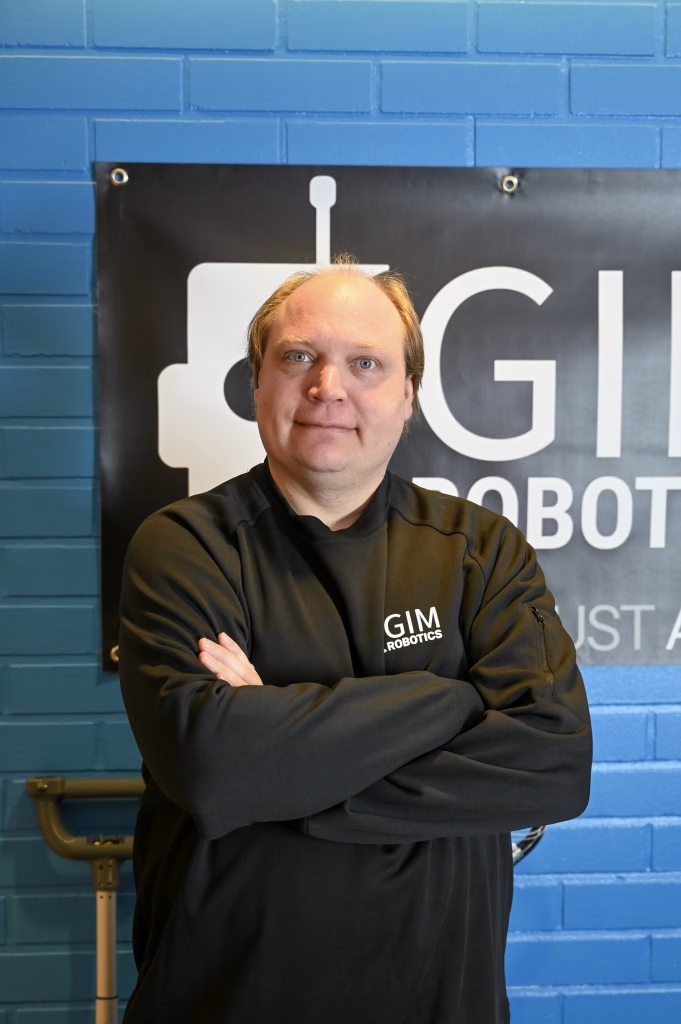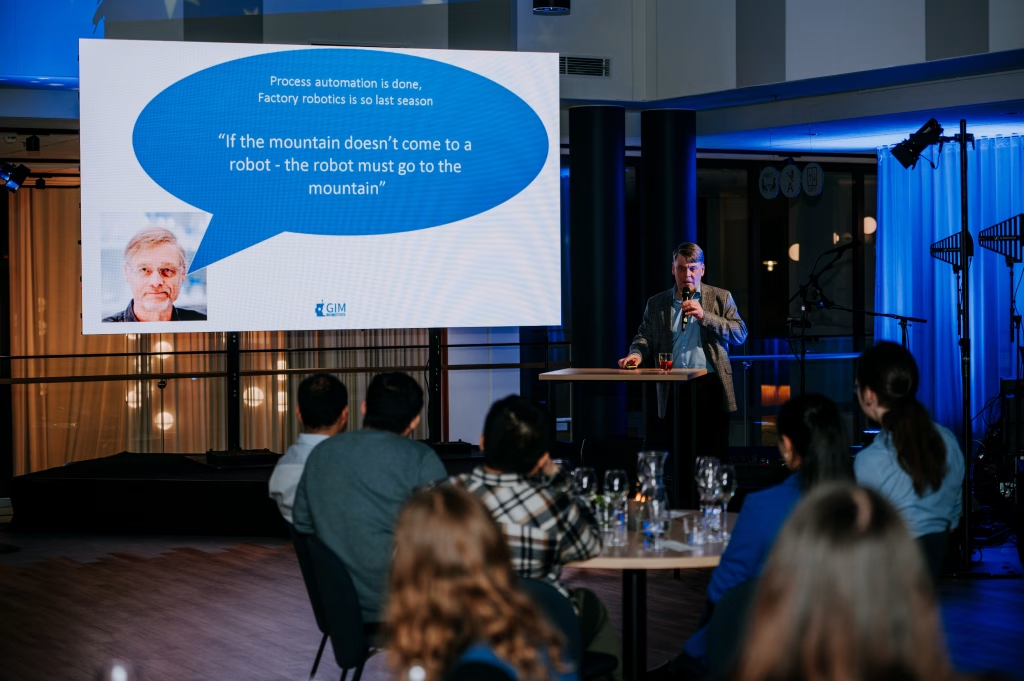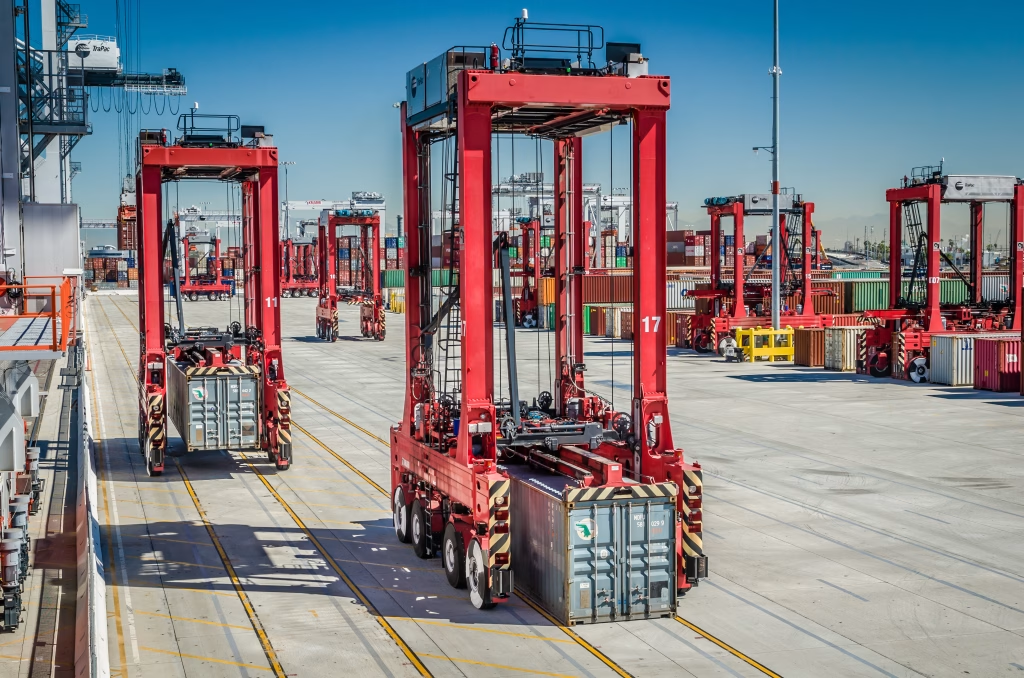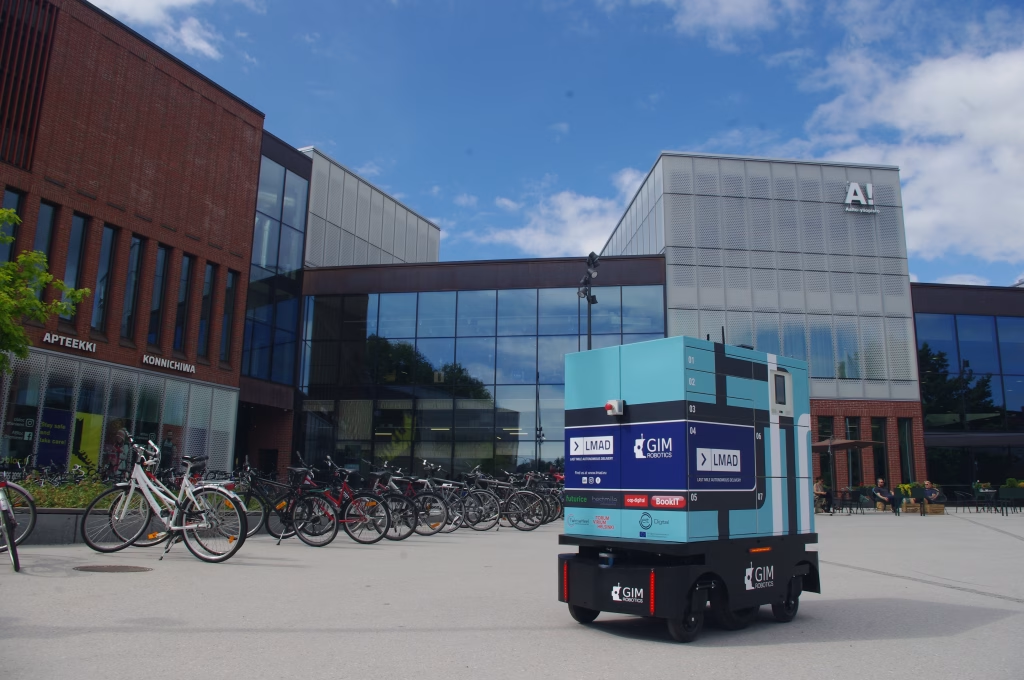From Hype to the Heart of Business. When we talk about robotics, many people picture either sci-fi humanoids or a precisely programmed production line in a factory. However, between these two extremes, a massive – though less visible – industrial revolution is underway; mobile work machines are becoming autonomous.

Mining machines, forestry equipment, port cranes, and agricultural vehicles are shifting from manual control to intelligent, independent operations. But where do we really stand? What has changed in ten years, and what are the real obstacles and opportunities on the path to fully autonomous worksites?
Our CEO, Dr. Jari Saarinen explored these questions in his recent presentation, “Making Work Machines Autonomous – Where We Are Now and What Does the Future Holds.”


The Real Challenge: The Dynamic World vs. the Controlled Factory
A common question is: why don’t we see autonomous forestry machines everywhere when factory robots have been welding cars for decades? Saarinen emphasizes that the two cannot be compared.
“An industrial robot operates in a precisely controlled environment where everything is predictable, and the task is repeated identically millions of times,” Saarinen explains. “A mobile work machine, in contrast, operates in a dynamic, uncontrolled environment, like a forest or a port. You cannot pre-modify that environment to suit the robot.”
Outdoors, the challenge multiplies. “The single biggest challenge is the weather. It can’t be controlled. Here in Finland, we famously have four ‘bad’ seasons, so we’ve had the chance to develop solutions that can withstand anything,” Saarinen laughs.
This dynamism makes automating mobile work machines significantly more challenging than traditional industrial robotics.

40 Years of History and a Maturing Market
Although autonomous work machines may seem new, their history in Finland stretches back 40 years. Saarinen recalls that Professor Aarne Halme founded the Automation Technology Laboratory at the Helsinki University of Technology back then, predicting that after process automation, the next major digital disruption would be in work machines.

GIM Robotics itself was founded as a spinoff from Aalto University’s (formerly TKK) top-tier research unit in 2014, precisely because the founders of the company saw that the industry was finally ready for these solutions.
The change in ten years has been immense. “In 2014, the industry was just on the edge of electrification. There was little demand for robotics, and the field was defined by a ‘hype cycle’ filled with unrealistic expectations,” Saarinen recalls. “Projects were mostly experimental.”
“Today, the situation is completely different. Nearly all major equipment manufacturers have their own R&D units for automation. Most importantly, projects are no longer driven by a desire to experiment, but by business units – the need is real.”
Still, a broad breakthrough is yet to come. Established segments like mine automation (e.g., Sandvik’s AutoMine®) and port logistics (e.g., Kalmar’s AutoStradTM) are pioneers, but in most of the areas, development is just beginning.

© Sandvik

The Drivers: From Efficiency to Labor Shortages
So why is automation being pursued so eagerly? Traditionally, the answer was efficiency. Now, an acute labor shortage has pulled up alongside it – and in many industries, overtaken it.
“In the United States, the average age of a farmer is 58,” Saarinen illustrates. “At the same time, nobody wants to train for difficult and dangerous jobs anymore, like working in mines or reinforcing tunnels.” Improving worker safety and ensuring consistent quality are also key motivators.
The Biggest Hurdle: “Can We” vs. “Should We” Automate?
If the technology exists and the need is urgent, why don’t we see more autonomous machines?
According to Saarinen, we have moved from the “Can this be done?” question to the “Is this commercially viable?” question. The biggest obstacle is often the business model.
“Developing an autonomous system and validating its safety is expensive. If only a few dozen machines are manufactured per year, the cost of automation per machine becomes too high, especially in environments where machines and humans work side-by-side,” he states. The rules of the “safety game” are still somewhat unclear.
While we see small food delivery robots on the streets, they aren’t the solution to everything. They are small, slow, and often reliant on remote operation. “If one of those robots fails and drives into a ditch, it’s a headline and a sure social media hit. If an autonomous bus does the same, the consequences are in a completely different category,” Saarinen points out.

What Is Accelerating Development Right Now?
Fortunately, several factors are accelerating development and making automation increasingly viable.
- Sensor Technology: In 2014, a single 3D Lidar sensor could cost tens of thousands of euros. Today, a comparable or even better sensor can be purchased for under a thousand. Simultaneously, 4D radar technology is evolving to provide reliability in adverse weather conditions.
- General Expertise: Expertise in the field has exploded. “The recent IROS conference for robotics had nearly 8,000 attendees,” Saarinen mentions. “This means customers are also more educated and know what to ask for.”
- Open Source: Tools like ROS/ROS2 (Robot Operating System) provide a foundation to build upon. Not everything has to be invented from scratch anymore.
And What About AI? It’s a Tool, not a Magic Wand
AI and Large Language Models (LLMs) are on everyone’s lips. Saarinen, whose company name GIM comes from Academy of Finland funded Centre of Excellence “Generic Intelligent Machines” research unit (2008-2013), approaches the topic with realistic enthusiasm.


“Yes, AI is a tool that will change the industry. It’s excellent for creating new data-driven solutions,” he admits. However, he tempers expectations that AI will solve everything tomorrow.
“In robotics, development is slower than in the purely digital world. First, hardware is always involved, which slows down iterations. Second, we lack the massive dataset that language models had – namely, everything ever written on the internet.”
Simulation: Automation’s Secret Weapon
There is one factor Saarinen highlights above all others: simulation. As GIM Robotics is a world leader in 3D Lidar data processing and localization, he understands the value of precise modeling.
“Traditionally, machines were developed using a V-model: first, the machine is designed and built, then sensors are installed, data is collected, and only then are the problems discovered,” Saarinen describes. With simulation, the machine’s mechanical design and its automation software can be developed in parallel. “We get feedback to the drawing board before a single part has been manufactured. This is a massive change.” Simulation is also the only way to manage the testing and validation required by regulations. It allows for millions of different test cases to be run automatically, which would be impossible to test physically.

The Future: The Robot as a Co-worker and New Services
So, where are we heading? Saarinen believes that Finland’s strong engineering industry is in a key position and will produce new autonomous solutions in the coming years.
“The biggest change, however, won’t just be in the machines, but in the business models”, he says and continues “We will see more “Robotics as a Service” (RaaS) models, where a company doesn’t buy an expensive autonomous machine, but rather an autonomous service, such as cleaning or logistics.”
And what is the human’s role? Saarinen returns to GIM Robotics’ history at Helsinki University of Technology (TKK) and the WorkPartner robot, which was designed as a human co-worker.

“My vision has always been that the robot does not replace the human but rather acts as the human’s co-worker. It handles the heavy, repetitive, and dangerous tasks, freeing up the human to do more valuable work that requires decision-making” Saarinen summarizes his talk.